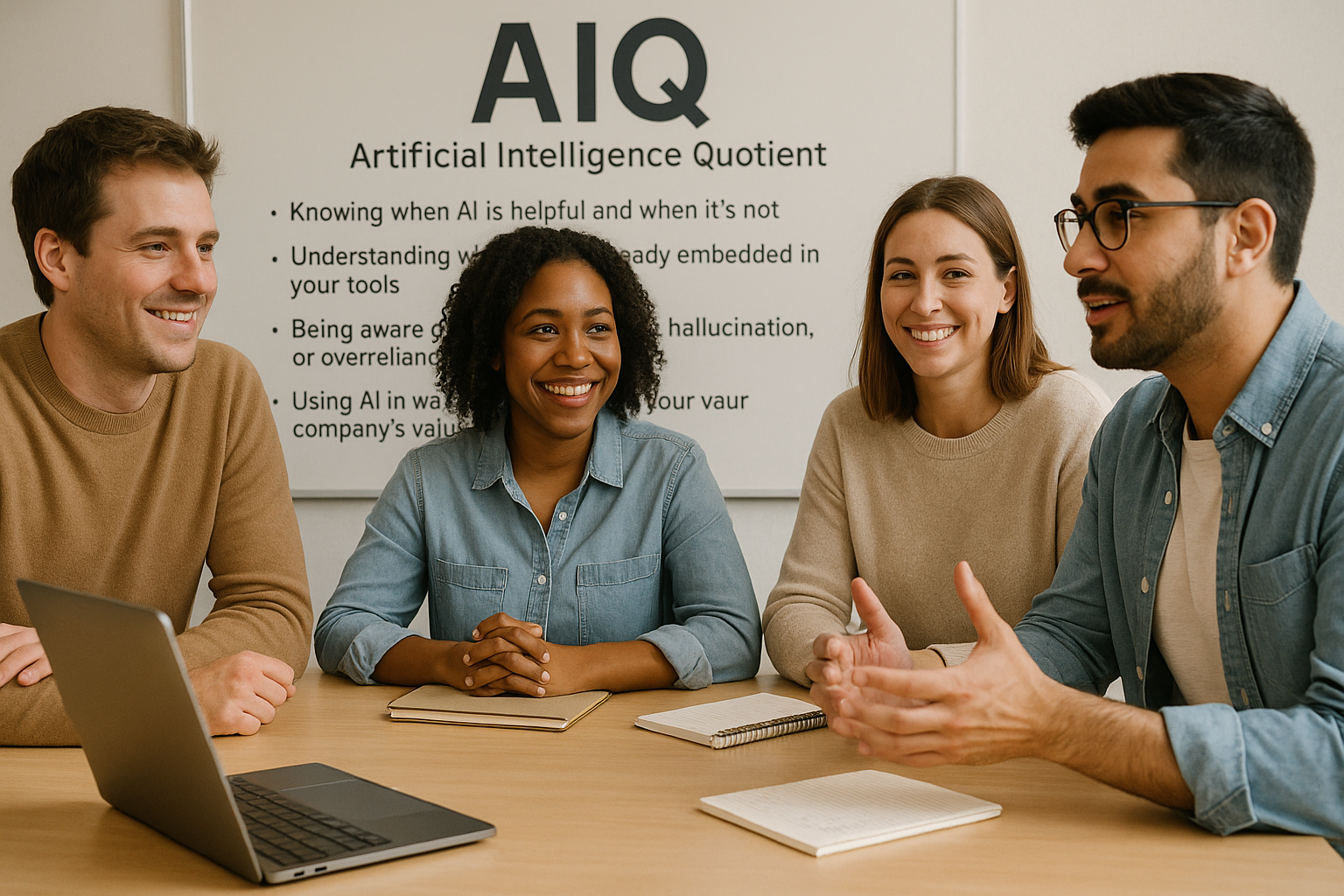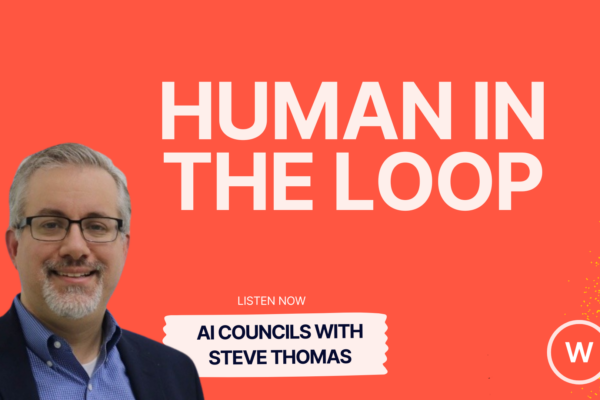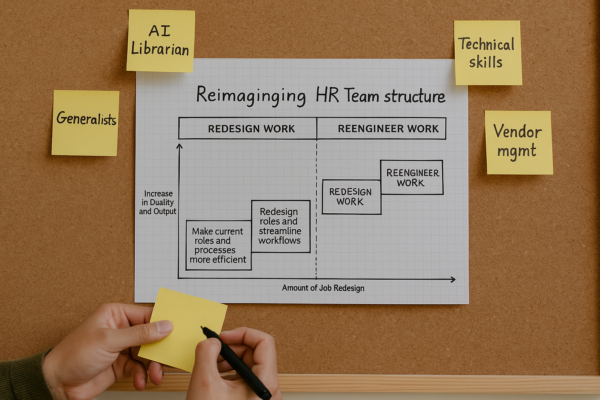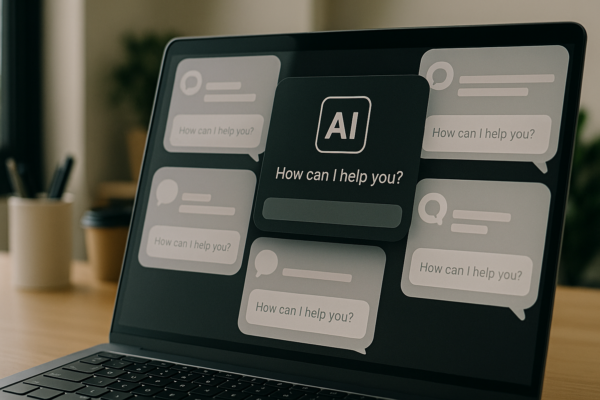AI is no longer a future trend; it’s a reality in the workplace. Tools like ChatGPT have cracked open access to machine learning in a way that’s fast, powerful, and, most importantly, usable by the average employee. And that’s exactly why we need to talk about raising your team’s AIQ.
While people are using AI to boost productivity for tasks such as summarizing notes, drafting emails, and writing policies, not everyone knows how to utilize it effectively. Or safely. Or thoughtfully.
That’s where HR comes in.
The Quiet Shift: From Tool to Sounding Board
We’re starting to talk to AI about everything, and that’s a bigger shift than it seems.
AI isn’t just helping us write better emails or summarize meeting notes. Increasingly, employees are turning to AI tools like ChatGPT for guidance on deeply personal and interpersonal challenges:
- “How do I ask for a raise?”
- “Should I leave this job?”
- “How do I approach my boss after a disagreement?”
- “Why do I keep ending up in the same situations at work?”
It makes sense. AI is always available. It doesn’t judge. It’s trained on vast amounts of human communication. It offers advice without fear of backlash or awkwardness. But that ease creates a new tension: AI doesn’t know you. It doesn’t remember your patterns. It can’t say, “You’ve used that excuse before.”
So while AI is a useful mirror, it’s not a full-length one. It reflects what you ask, but not always what you need.
For HR, this creates both an opportunity and a responsibility. As more employees turn to conversational AI for career guidance, conflict resolution, and even mental health support, HR can’t ignore the trend and shouldn’t try to stop it. Instead, HR can help employees build the literacy and confidence to use these tools responsibly by investing in tools that are transparent and ethical, offering AI-powered coaching with guardrails, and teaching when to use AI versus when to talk to a human. It also means reinforcing that AI should align with company values, empathy, and good judgment.
What Is “AIQ”?
AIQ, or Artificial Intelligence Quotient, has been used in academic and industry settings to describe a person’s ability to effectively collaborate with AI systems. It’s not a brand-new concept, but its relevance to workplace teams is growing fast.
You can think of AIQ as the combination of someone’s understanding, practical use, and responsible judgment around AI tools. For HR, improving your team’s collective AIQ means building the knowledge and confidence needed to use AI well across every department.
This isn’t just about writing better prompts. It’s about knowing when AI is helpful and when it’s not, understanding where AI is already embedded in your tools, recognizing risks such as bias or overreliance, and ensuring that AI use aligns with your company’s values and goals. Boosting your team’s AIQ isn’t a technical exercise. It’s a culture shift. And HR can lead the way.
ChatGPT Demystified AI — for Better and Worse
When ChatGPT landed, it made AI feel accessible. It transformed machine learning into something your operations manager or recruiter could actually utilize. It sparked curiosity and sped up workflows. But it also created a false sense of confidence.
Now everyone’s an AI expert — until they’re not. Many teams still struggle with prompting well (not just “write this,” but “how should I approach…”), understanding what AI can or can’t see in the company context, trusting generated outputs without a second thought, or misusing AI for sensitive conversations. If we want employees to be good stewards of this new toolset, we have to raise the bar.
The Productivity Opportunity (and Gap)
Roles in content, design, and engineering have been among the earliest adopters of AI. They’re already seeing time savings and iteration speed. But other roles — especially in HR, legal, and finance — are lagging behind. That’s not because the tools don’t work for them. It’s because no one has helped them build confidence in using AI effectively.
That’s a missed opportunity. AI can support every function: HR can use it to answer policy questions or draft documents. Finance can generate scenario plans or simplify reporting. Legal can prep templates and flag inconsistencies. But that only works when people know how to use the tools — and what to watch out for.
How HR Can Raise Employees’ AIQ
HR doesn’t need to become the AI police. But it does need to lead by example and make learning approachable. Here’s how:
-
Model good behavior. Use AI in your own workflows and share how you’re using it.
-
Create space for learning. Host prompt workshops, offer templates, or share a weekly “AI tip” in Slack.
-
Clarify what’s okay (and what’s not). Partner with legal and IT to develop practical usage guidelines.
-
Spot and address fear. Normalize experimentation and let teams know it’s okay to learn as they go.
-
Build your own fluency. Stay hands-on with the tools to lead with confidence and credibility.
What to Teach Your Team
While much of AI literacy is hands-on, there are core lessons worth covering:
-
Prompting basics: how to give AI the right context, tone, and structure
-
Where AI lives: it’s already in Slack, Notion, Google Docs, LinkedIn, and more
-
When to ask a human: use AI for support, not substitution, especially in sensitive or strategic conversations
-
How to evaluate answers: teach healthy skepticism and encourage review
The Payoff: More Productivity, Less Risk
Teams with high AIQ aren’t just faster; they’re also more effective. They’re more thoughtful. They’re less likely to misuse tools and more likely to find real value in them. And they’re better at building workflows that combine AI efficiency with human empathy.
The future of employee support will blend AI and human wisdom. The best HR teams won’t choose one or the other. They’ll design systems that allow both to thrive.
Because sometimes AI can help you reflect. And sometimes, you need a human to say,
“Hey, you’ve been here before. What are you going to do differently this time?”



